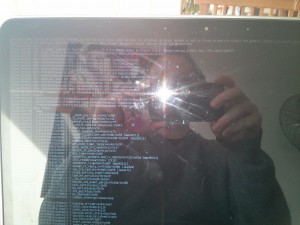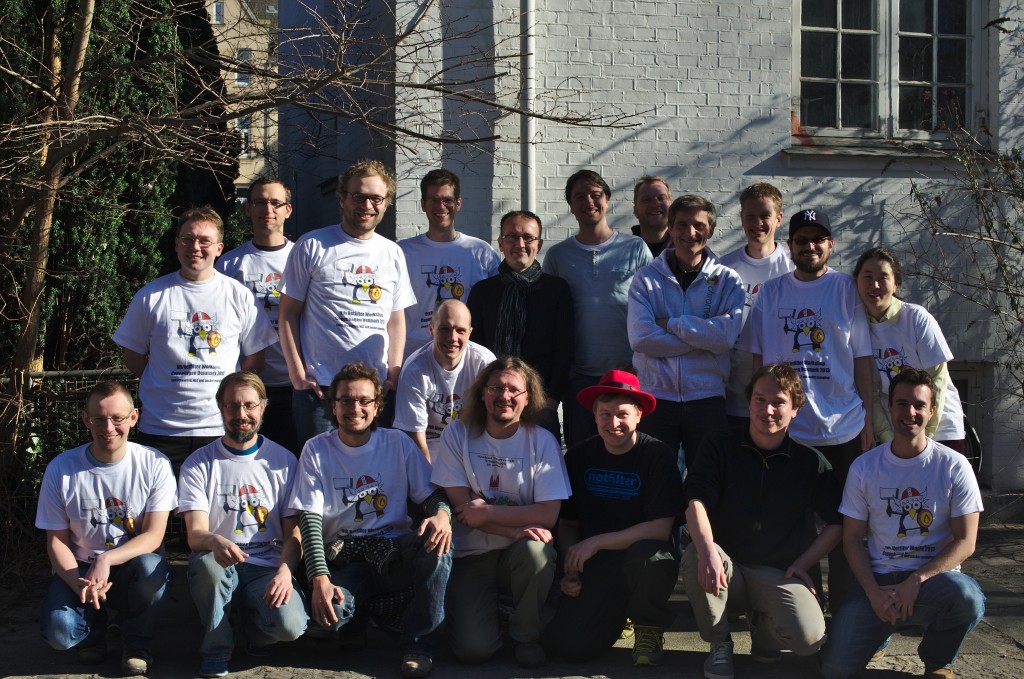Introduction
This is a new kernel packet filtering framework. The only change is on iptables. Netfilter hooks, connection tracking system, NAT are unchanged.
It provides a backward compatibility. nftables was released in March 2009 by Patrick Mchardy. It has been revived in the precedent months by Pablo Neira Ayuso and other hackers.
Architecture
It uses a pseudo-state machine in kernel-space which is similar to BPF:
- 4 registers: 4 general purpose (128 bits long each) + 1 verdict
- provides instruction set (which can be extended)
Here’s a example of existing instructions:
reg = pkt.payload[offset, len]
reg = cmp(reg1, reg2, EQ)
reg = byteorder(reg1, NTOH)
reg = pkt.meta(mark)
reg = lookup(set, reg1)
reg = ct(reg1, state)
reg = lookup(set, data)
Assuming this complex match can be developed in userspace by using this instruction set. For example, you can check if source and destination port are equal by doing two pkt.payload operation and then do a comparison:
reg1 = pkt.payload[offset_src_port, len]
reg2 = pkt.payload[offset_dst_port, len]
reg = cmp(reg1, reg2, EQ)
This was strictly impossible to do without coding a C kernel module with iptables.
C module still needs to be implemented if they can not be expressed with the existing instructions (for example the hashlimit module can not be expressed with current instructions). In this case, the way to do will be to provide a new instruction that will allow more combination in the futur.
nftables shows a great flexibility. The rules counters are now optional. And they come in two flavors, one system-wide counter with a lock (and so with performance impact) and a per-cpu counter. You can choose which type you want when writing the rule.
Nftables operation
All communications are made through Netlink messages and this is the main change from a user perspective. This change is here to be able to do incremental changes. iptables was using a different approach where it was getting the whole ruleset from kernel in binary format making update to this binary blob and sending it back to the kernel. So the size of the ruleset has a big impact on update performance.
Rules have a generation masks attached coding if the rules is currently active, will be active in next generation or destroyed in next generation. Adding rules is starting a transaction, sending netlink messages adding or deleting rules. Then the commit operation will ask the kernel to switch the ruleset.
This allow to have the active ruleset to change at once without any transition state where only a part of the rules are deployed.
Impact of the changes for users
The iptables backward comptability will be provided and so there is no impact on users. xtables is a binary which is using the same syntax as iptables and that is provided by nftables. Linking the xtables binary to iptables and ip6tables will be enough to assure compatibility of existing scripts.
User will have more and more interest in switching due to new features that will be possible in nftables but not possible with iptables.
A high level library will be provided to be able to handle rules. It will allow easy rule writing and will have an official public API.
The main issue in the migration process will be for frontends/tools which are using the IPTC library which is not officially public but is used by some. As this library is an internal library for iptables using binary exchange, it will not work on a kernel using nftables. So, application using IPTC will need to switch to the upcoming nftables high level library.
The discussion between the attendees also came to the conclusion that providing a easy to use search operation in the library will be a good way to permit improvement of different firewall frontends. By updating their logic by doing a search and then adding a rule if needed, they will avoid conflict between them as this is for example currently the case with network manager which is destroying any masquerading policy in place by blindly inserting a masquerading rule on top when he thinks he needs one.
Release date
A lot of works is still needed but there is good chance the project will be proposed upstream before the end of 2013. The API needs to be carefully review to be sure it will be correct on a long time. The atomic rule swapping systems needs also a good review.
More and more work power is coming to the project and with luck it may be ready in around 6 months.



